Painting equipment for plein air painting -watercolour and gouache
Watercolour
The painting outfit that I use at the present moment.
I used to sit cross legged on the ground and paint on a block with the pallete sitting beside me when I first started doing watercolours. I always painted out of doors and most often during my lunch break, so ease of transportation and set up were of great importance. Crossed legs are not so comfortable these days and I paint standing up, I can paint from the shoulder and can step back to evaluate the painting more easily.
I have tried a number of setups but this meets most of my requirements . It is light, durable, packs small and easy to setup. I can change the angle of the board to stop the sun shining on my painting and for water flow control while I am working.
The tripod
A standard photographic tripod with a ball head. I have settled on the Slik sprint pro II after trying many different types. It is light, durable, and compact enough to fit in a small suitcase , the legs spread out to provide more stability when you are painting in the wind and it is reasonably priced.
I have a number of them, all purchased from www.bhphotovideo.com
The paper board, I haven’t come up with a better name for it
I use a light weight board cut to be about 1/2 inch bigger all round than the paper that I am working on, I clip the paper to the boards at the corners. The board can be made of any lightweight durable waterproof material, 1/4 inch ply, Gatorboard, hollow core plastic sheeting (Coroplast). The board attaches to the tripod with a threaded insert to fit the tripod screw, Guerrilla painter http://www.guerrillapainter.com Ken Bromley Art supplies http://www.artsupplies.co.uk/ also supplies them makes a threaded aluminium plate that works very well. I usually carry a couple of different sizes of board with me. The board also help to protect the paper when they are in the bag.
My palette support board
I use a lightweight board attached to the tripod to place my water containers, brushes and sometimes my palette while I am working. It is a convenience that is very hard to live without. My board is made from 1/2 inch Gatorboard, a very strong foam core board that stands up to abuse, 1/4 ply would do as well.
The cutouts fit my tripod and and allow the board to rest on the tripod clamps with the centre post of the tripod adjusted to hold the board in a horizontal position, you can put holes in the board to hold brushes and I have also put velcro tabs on to hold my water containers in place when the wind is blowing.
My Paints
I use good quality tube paints, I used M Graham brand for many years,I really liked the colours and the strength of the pigments it is very easy to get big juicy washes with it.
Unfortunately the moistness that allows this made the Graham colousrs less than suitable for plein air work here in Bermuda where the pigments would migrate in my closed palette box which I usually carry on its side in my bag. Some of the colours Cobalt tourquoise in particular simply will not dry in large masses in Bermuda’s moist environment.
I have since switched to mostly Daniel Smiths colours, I was using their Quinacridones anyway, they seem to make the only real Quinacridone Gold among all the manufacturers, they must have bought a ton of it before the Pigment Manufacturers stopped producing it.
The Daniel Smith colours and the Winsor & Newton pigments will dry and not migrate in a palette box. I just have to do a little more work getting them moist before I start painting.
My colours
My overall palette changes over time as I get interested in different effects. However I do have a core set of colours which I always use and which are always arranged in the same sequence on my pallette so I don’t have to search for a colour when I am busy putting down a wash.
Basically I have a warm and cool variation of each of the primaries.
Indanthrone Blue
Ultamarine Blue
Cobalt Blue
Pthalo Blue
Cobalt Teal
Azo Yellow
Cadmium Yellow Medium
Quinacridone Gold
Gold Ochre
Pyroll Orange
Cadmium Red
Quinacridone Coral
Quinacridone Rose
Quinacridone Burnt Orange
Quinacridone Magenta
Quinacridone Violet
A long list but my most used colours are Ultramarine Blue, Quinacridone Burnt Orange and Cobalt Teal which I find very very useful for Bermuda water.
Plein air gouache setup
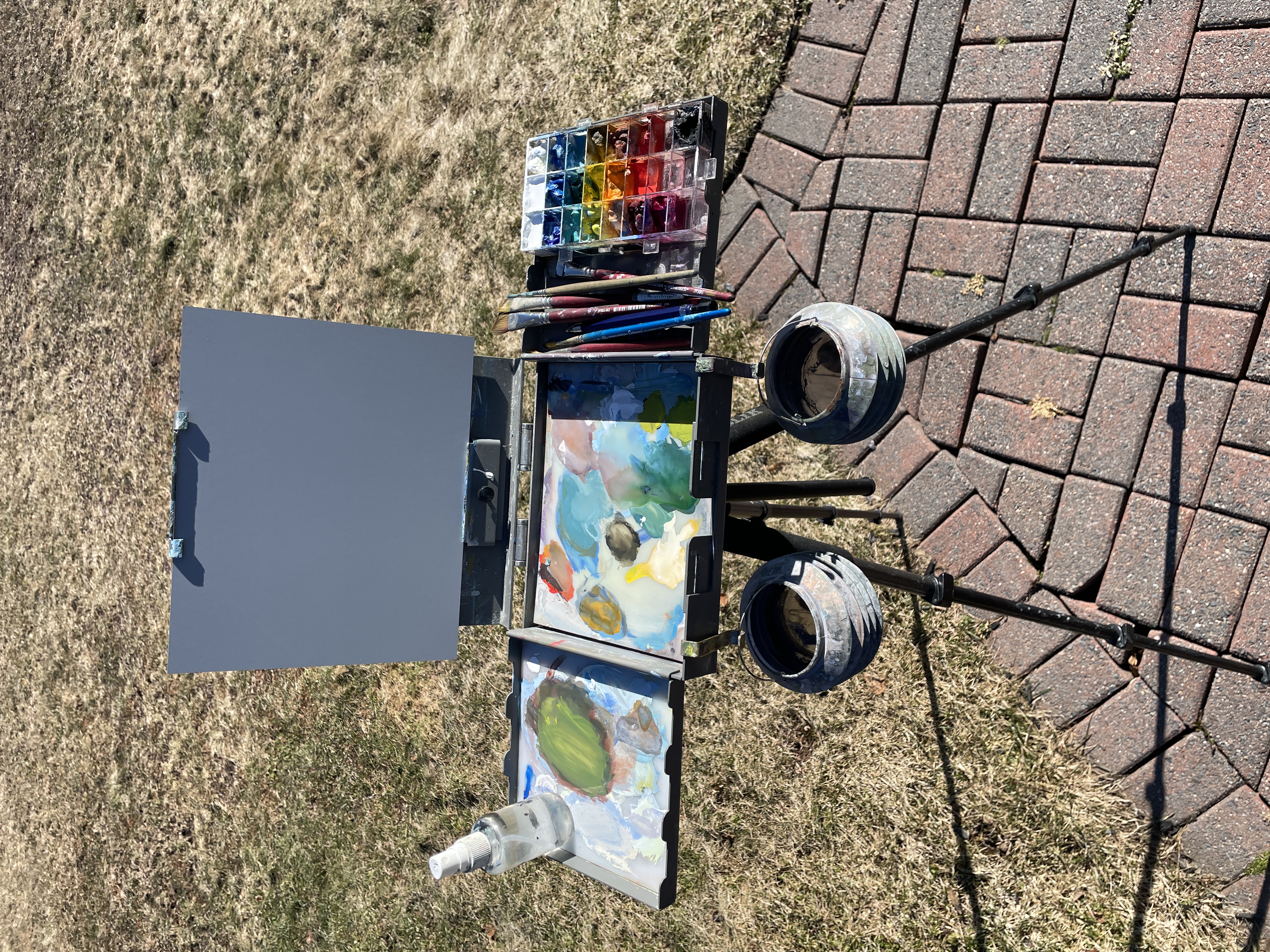
The tripod is the same one that I use for watercolour, the easel is the Strada Micro Plus. I keep the paint in a Meeden airtight paint container which keeps the paint moist and workable between sessions. The box also happens to fit exactly into the larger pallete tray so it is fixed in place while I work. Collapsible paint cups hang from the main pallete tray and the mast on the back plate holds panels up to 10″ high.
The easel folds up with all the palletes inside it to make a very packable package.
The colours I use are very similar to the watercolour list. With the addition of Permanent White and Mixing White. (Titanium and Zinc)

The tray is not necessary although if i have it with me i will put it on the tripod as a place to put papertowels and other things on while I am not using them.

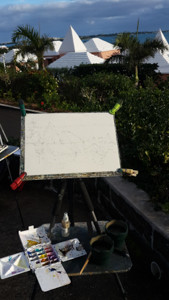

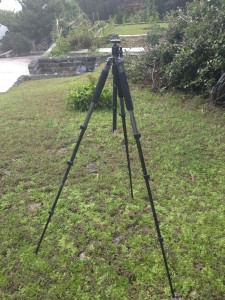
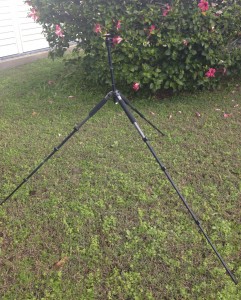

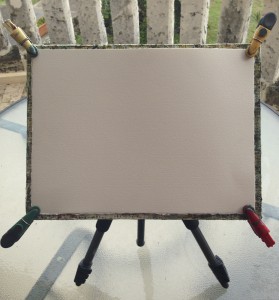

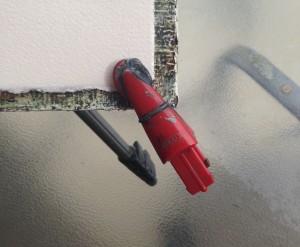
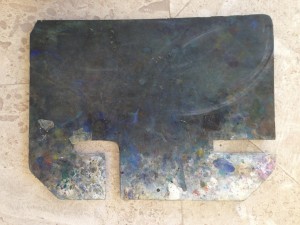
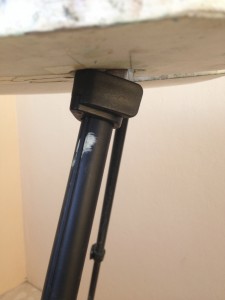


THANK YOU.
See you on Saturday
Hello there! I could have sworn I’ve been to this log before
but affer browsing through some of the post I realized it’s neew
to me. Nonetheless, I’m definitely delighted I found it and I’ll be bookmarking and checking
back often!
Hi Christopher I recently met you at the Plein air festival. You are one of the many artists I met who inspired me to try my hand in watercolor. I really enjoyed speaking to you in your studio and viewing many of your beautiful works. My question is what kind of brushes do you use? I will hopefully be returning to Bermuda for the next festival. I look forward to seeing everyone again.
Hi Daniella
sorry to take so long to get back to you
haven’t been on to my site for a while.
My brushes of choice have varied over the years, sometimes i use mostly flats, and at other times rounds, at the moment my most used brushes are squirrel mops, fairly large, i can get a lot of colour moving around the paper with them, I usually get them from Rosemary’s brushes http://www.rosemaryandco.com/watercolour-brushes/pure-squirrel-hair/pure-squirrel-mop
My favourite large flats, 1″ and 1.5″ and 2″ are from Jack Richeson Steven Quiller series 7010, they again put down a lot of colour but can give you a razor thin line when they are uses on the edge. I have worn out few of them over the years.
Hope this helps, take care
Christopher
Thank You so much on getting back to me and advising what brushes you use. It was great meeting you. Hope to be back for the next art festival and paint with you guys again.
Happy Painting
Daniella Toscanini